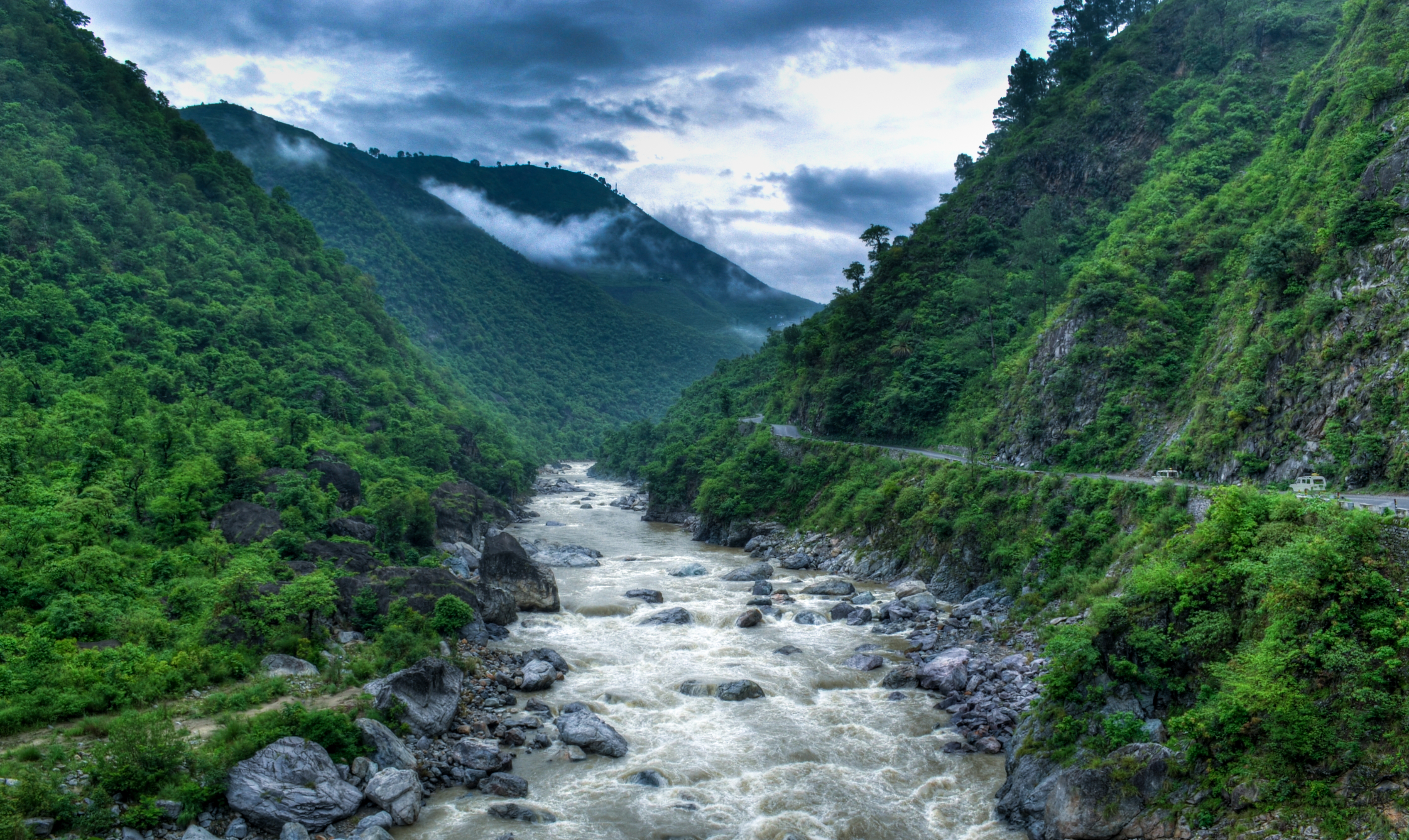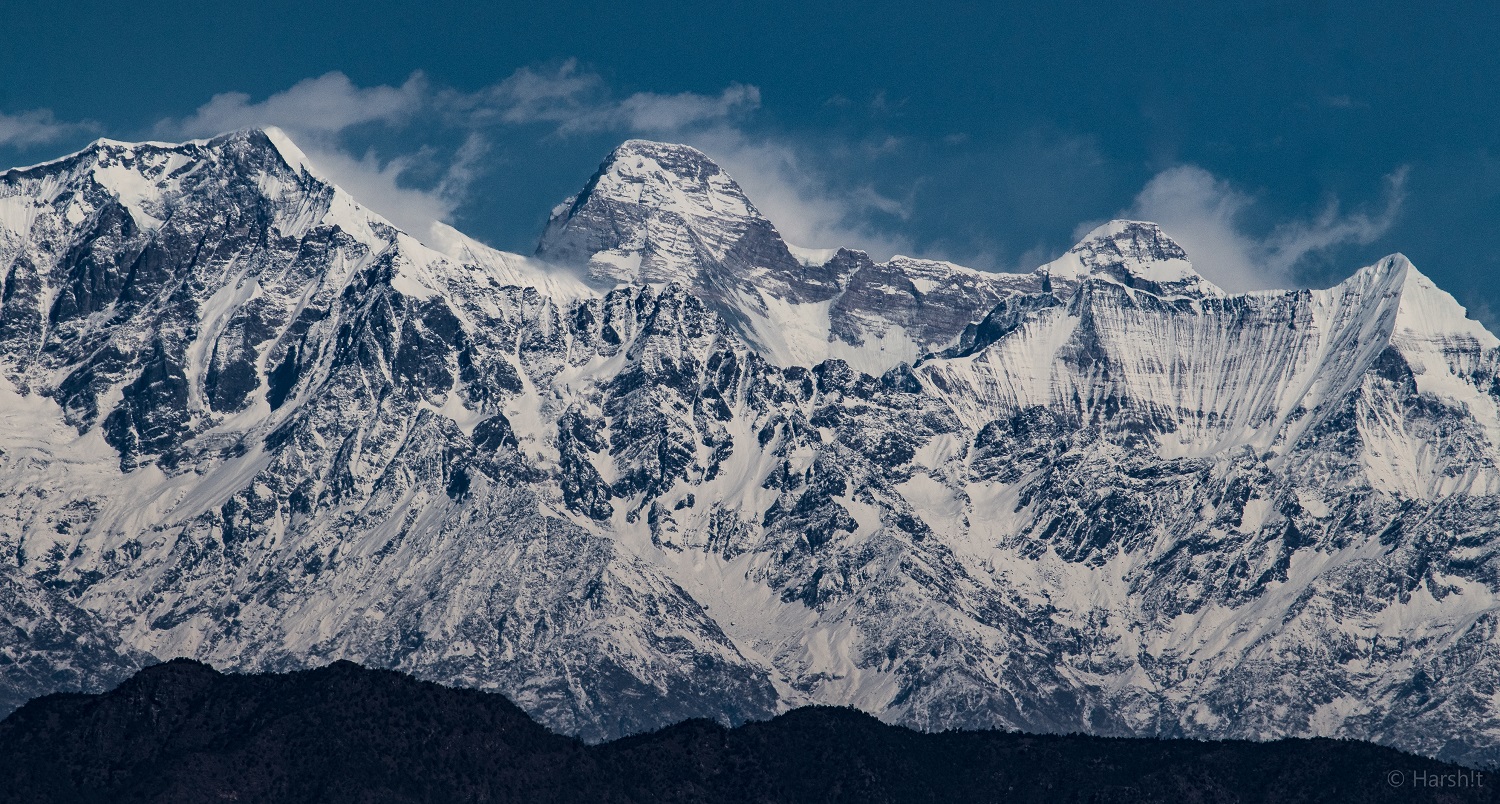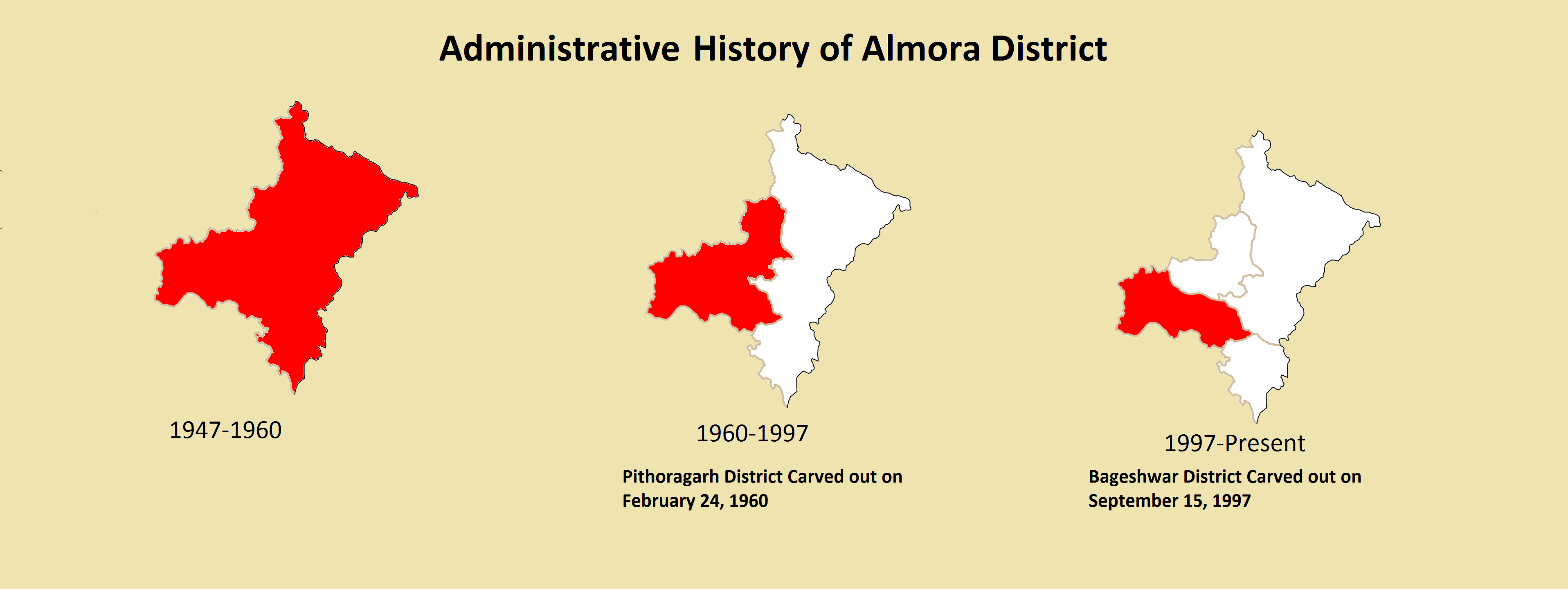|
Kausani
Kausani ( Kumaoni: ''Kôsānī'') is a hill station and Village situated in Bageshwar district in the state of Uttarakhand, India. It is famous for its scenic splendour and its spectacular 300 km-wide panoramic view of Himalayan peaks like Trisul, Nanda Devi and Panchchuli. Mahatma Gandhi called this place the 'Switzerland of India', due to similarity in landscapes. History During Independence of India in 1947, Kausani was situated in the Almora District till 15 September 1997 after which Bageshwar district was carved out of Almora district. On 9 November 2000, the State of Uttarakhand was created from the Himalayan and adjoining northwestern districts of Uttar Pradesh. Geography Kausani is located at in Bageshwar district of Uttarakhand, India at a distance of from Bageshwar city, the administrative Headquarter of Bageshwar District. Kausani is located north of Almora, a major hill station and the historical capital of Kumaon Kingdom. Kausani lies in the Kumaon divi ... [...More Info...] [...Related Items...] OR: [Wikipedia] [Google] [Baidu] |
Garur
Garur is a town in the Bageshwar district of the state of Uttarakhand, India. Administration Garur is one of the Sub Divisions in Bageshwar District. Sub Divisional Magistrate (SDM) office is situated nearby at Purda. Besides SDM Office, Tehsil Headquarter is also in Purda. Presently Shri Jaywardhan Sharma is SDM of Garur sub division. Block office of Garud Block is located in Gadsher Village. Garur has forest range office at Gadkhet and Baijnath. The Garur Nagar Panchayat was established on 23 July 2021. At the time of its formation, the total population of the town was 5,002 and it was spread over an area of . Geography and demographics Garur town spreads in a vast valley formed by glaciation and river erosion of Gomati and Garur Ganga. The climate of Garur is Sub-tropical to temperate lowest temperature ranging around 5° celsius and highest up to 35° celsius. Nearby places include Kausani, Baijnath, Kot Bhramari Gwaldam and Bageshwar. The neighbouring villages also inc ... [...More Info...] [...Related Items...] OR: [Wikipedia] [Google] [Baidu] |
Trisul
Trisul is a group of three Himalayan mountain peaks of western Kumaun, Uttarakhand, with the highest (Trisul I) reaching 7120m. The three peaks resemble a trident - in Sanskrit, Trishula, trident, is the weapon of Shiva. The Trishul group forms the southwest corner of the ring of peaks enclosing the Nanda Devi Sanctuary, about west-southwest of Nanda Devi itself. The main peak, Trisul I, was the first peak over to have ever been climbed, in 1907. Description of the massif and neighbouring peaks The three peaks are named Trisul I, Trisul II, and Trisul III. The massif is a north-south ridge, with Trisul I at the north end and Trisul III at the south. The massif runs roughly North-South, and hence appears compressed when viewed from the south ( Ranikhet, Kausani), and more stretched out from the Southeast ( Chamoli, Bedini Bugyal). Nanda Ghunti lies a few Kilometres to the northwest, while Mrigthuni is just to the southeast. Climbing history Trisul I T. G. ... [...More Info...] [...Related Items...] OR: [Wikipedia] [Google] [Baidu] |
Kumaon Division
Kumaon (; Kumaoni: ''Kumāū''; ; historically romanized as KemāonJames Prinsep (Editor)John McClelland ) is a revenue and administrative division in the Indian State of Uttarakhand. It spans over the eastern half of the state and is bounded on the north by Tibet, on the east by Nepal, on the south by the state of Uttar Pradesh, and on the west by Garhwal. Kumaon comprises six districts of the state: Almora, Bageshwar, Champawat, Nainital, Pithoragarh and Udham Singh Nagar. Historically known as Manaskhand and then Kurmanchal, the Kumaon region has been ruled by several Hindu dynasties over the course of history; most notably the Katyuris and the Chands. The Kumaon division was established in 1816, when the British reclaimed this region from the Gorkhas, who had annexed the erstwhile Kingdom of Kumaon in 1790. It was formed into a division of what was then called Ceded and Conquered Provinces, later known as United Provinces. In independent India the state was calle ... [...More Info...] [...Related Items...] OR: [Wikipedia] [Google] [Baidu] |
Someshwar, Uttarakhand
Someshwar is the name of the sub-division headquarters, a conglomeration of revenue villages and it also refers to the entire region as Someshwar Tehsil and Sub Division in the Almora District in the hill-state of Uttarakhand, India. Someshwar is situated in the banks of two rivers viz. Kosi and Sai almost 7 km away from well known tourist place Kausani. The valley of Someshwar is surrounded by peaks known as Jayanti and Airi. Their names are respectively based on two Hindu Goddesses. Someshwar itself is a holy place dedicated to lord Shiva. The topography and availability of natural infrastructure provide an excellent opportunity for development of tourism/ecotourism.The Someshwar valley is divided into two sub-vallies - Lod Valley and Boraro Valley. Both the valleys are also called as Bowl of Rice. Geography Someshwar is one of the well connected places of Uttarakhand that is situated in foots of Himalaya. It is developed in the banks of Kosi and Sai rivers. one more r ... [...More Info...] [...Related Items...] OR: [Wikipedia] [Google] [Baidu] |
Uttarakhand
Uttarakhand ( , or ; , ), also known as Uttaranchal ( ; List of renamed places in India, the official name until 2007), is a States and union territories of India, state in the North India, northern part of India. It is often referred to as the "Devbhumi" (literally 'Land of the Gods') due to its religious significance and numerous Hindu temples and Hindu pilgrimage sites in India, pilgrimage centres found throughout the state. Uttarakhand is known for the natural environment of the Himalayas, the Bhabar and the Terai regions. It borders the Tibet Autonomous Region of China to the north; the Sudurpashchim Province of Nepal to the east; the Indian states of Uttar Pradesh to the south and Himachal Pradesh to the west and north-west. The state is divided into two divisions, Garhwal division, Garhwal and Kumaon division, Kumaon, with a total of List of districts of Uttarakhand, 13 districts. The winter capital of Uttarakhand is Dehradun, the largest city of the state, which is a ra ... [...More Info...] [...Related Items...] OR: [Wikipedia] [Google] [Baidu] |
Nanda Devi
Nanda Devi is the second-highest mountain in India, after Kangchenjunga, and the highest located entirely within the country (Kangchenjunga is on the border of India and Nepal). It is the 23rd-highest peak in the world. Nanda Devi was considered the highest mountain in the world before computations in 1808 proved Dhaulagiri to be higher. It was also the highest mountain in India until 1975, when Sikkim, an independent kingdom until 1948 and a protectorate of India thereafter, became a part of the Republic of India. It is located in Chamoli Garhwal district of Uttarakhand, between the Rishiganga valley on the west and the Goriganga valley on the east. The peak, whose name means "Bliss-Giving Goddess", is regarded as the patron goddess of the Garhwal and Kumaon Himalayas. In acknowledgment of its religious significance and for the protection of its fragile ecosystem, the Government of India declared the peak as well as the circle of high mountains surrounding it—the N ... [...More Info...] [...Related Items...] OR: [Wikipedia] [Google] [Baidu] |
Bageshwar District
Bageshwar is a district of Uttarakhand state in northern India. The town of Bageshwar is the district headquarters. Prior to its establishment as a district in 1997 it was part of Almora district. Bageshwar district is in Kumaon, and is bounded on the west and northwest by Chamoli District, on the northeast and east by Pithoragarh District, and on the south by Almora District. As of 2011 it is the third least populous district of Uttarakhand (out of 13), after Rudraprayag and Champawat. History The area, that now forms Bageshwar district, was historically known as Danpur, and was ruled by Katyuris during the 7th century AD. After the disintegration of the Katyuri kingdom in the 13th century, the area remained under the rule of Baijnath Katyurs, direct descendants of Katyuri kings. In 1565, king Balo Kalyan Chand annexed Danpur along with Pali, Barahmandal and Mankot to Kumaun. In 1791, Almora, the seat of the Kumaon, was invaded and annexed by the Gorkhas of Nepal. ... [...More Info...] [...Related Items...] OR: [Wikipedia] [Google] [Baidu] |
Almora
Almora ( Kumaoni: ''Almāḍ'') is a municipal board and a cantonment town in the state of Uttarakhand, India. It is the administrative headquarters of Almora district. Almora is located on a ridge at the southern edge of the Kumaon Hills of the Himalaya range. Koshi (Kaushiki) and Suyal (Salmale) rivers flow along the city and snow-capped Himalayas can be seen in the background. Almora was founded in 1568 by King Kalyan Chand; however, there are accounts of human settlements in the hills and surrounding region in the Hindu epic Mahabharata (8th and 9th century BCE). Almora was the seat of Chand kings that ruled over the Kumaon Kingdom. It is considered the cultural heart of the Kumaon region of Uttarakhand. According to the provisional results of the 2019 national census of India Almora had a population of 179,000. Nestled within higher peaks of the Himalaya, Almora enjoys a year-round mild temperate climate. The town is visited by thousands of tourists annually from a ... [...More Info...] [...Related Items...] OR: [Wikipedia] [Google] [Baidu] |
Almora District
Almora is a district in the Kumaon Division of Uttarakhand state, India. The headquarters is at Almora. It is 1,638 meters above sea level. The neighbouring regions are Pithoragarh district to the east, Chamoli district to the west, Bageshwar district to the north and Nainital district to the south. History The ancient town of Almora was capital of the Kumaon Kingdom, before its establishment, it was under the possession of Katyuri king Baichaldeo. Later on when the Chand dynasty was founded in Champawat, the town of Almora was founded at this centrally located place in 1568 by Kalyan Chand. Later Chand kings shifted the capital of the Kumaon Kingdom from Champawat to Almora. Almora town was the administrative headquarter of the Kumaun district; that was formed in 1815 following the defeat of Gorkha army in the Anglo-Gorkha war and the 1816 Treaty of Sugauli. The Kumaun district then consisted of the complete Kumaon Division excluding the Terai district with its hea ... [...More Info...] [...Related Items...] OR: [Wikipedia] [Google] [Baidu] |
Nainital
Nainital ( Kumaoni: ''Naintāl''; ) is a city and headquarters of Nainital district of Kumaon division, Uttarakhand, India. It is the judicial capital of Uttarakhand, the High Court of the state being located there and is the headquarters of an eponymous district. It also houses the Governor of Uttarakhand, who resides in the Raj Bhavan. Nainital was the summer capital of the United Provinces. Nainital is located in the Kumaon foothills of the Jagbeer Himalayas at a distance of from the state capital Dehradun and from New Delhi, the capital of India. Situated at an altitude of above sea level, the city is set in a valley containing an eye-shaped lake, approximately two miles in circumference, and surrounded by mountains, of which the highest are Naina Peak () on the north, Deopatha () on the west, and Ayarpatha () on the south. From the tops of the higher peaks, "magnificent views can be obtained of the vast plain to the south, or of the mass of tangled ridges ly ... [...More Info...] [...Related Items...] OR: [Wikipedia] [Google] [Baidu] |
Himalayas
The Himalayas, or Himalaya (; ; ), is a mountain range in Asia, separating the plains of the Indian subcontinent from the Tibetan Plateau. The range has some of the planet's highest peaks, including the very highest, Mount Everest. Over 100 peaks exceeding in elevation lie in the Himalayas. By contrast, the highest peak outside Asia ( Aconcagua, in the Andes) is tall. The Himalayas abut or cross five countries: Bhutan, India, Nepal, China, and Pakistan. The sovereignty of the range in the Kashmir region is disputed among India, Pakistan, and China. The Himalayan range is bordered on the northwest by the Karakoram and Hindu Kush ranges, on the north by the Tibetan Plateau, and on the south by the Indo-Gangetic Plain. Some of the world's major rivers, the Indus, the Ganges, and the Tsangpo– Brahmaputra, rise in the vicinity of the Himalayas, and their combined drainage basin is home to some 600 million people; 53 million people live in the Himalayas. The Himalaya ... [...More Info...] [...Related Items...] OR: [Wikipedia] [Google] [Baidu] |







